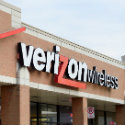
New Verizon CEO Hans Vestberg is looking to make an early mark on the US operator with a big restructuring based on growth expectations in the nascent 5G market.
Promoted from chief technology officer in August, Vestberg said the company would be split into three customer-facing units in January next year. One of these will combine fixed and mobile operations targeting the consumer market, with another doing the same for the business sector. (See Verizon Names Vestberg as New CEO.)
The other unit will include Oath, the online business formed when Verizon Communications Inc. (NYSE: VZ) merged AOL and Yahoo assets it had previously acquired, as well as other advertising and media activities.
The update comes as US operators including Verizon prepare to launch services based on the 5G standard, a next-generation mobile technology that promises higher-speed connections for customers. Verizon recently introduced a pre-standard version of 5G to support some residential broadband services, where 5G is used as an alternative to fixed-line infrastructure. (See Verizon CFO Expects Mobile 5G Service 'Sometime' in 2019 and Verizon's Home-Grown 5G Arrives Today.)
The grouping of fixed and mobile operations in the new structure is perhaps not surprising. The arrival of 5G is blurring the lines between fixed and mobile communications for both technology and service reasons. On the technology side, mobile operators launching 5G will need access to high-speed fixed lines for "backhaul" connections between basestations and the core network.
Deploying 5G for residential broadband purposes will mean promoting and selling it like a fiber service, rather than a mobile offer. In some markets, operators are also combining fixed and mobile operations as they concentrate on selling bundles of communications products, as opposed to standalone services. Verizon's restructuring could support a similar focus on "convergence" in future.
The shake-up will leave Ronan Dunne, the current head of Verizon Wireless (the mobile division), as the boss of the new consumer business. Tami Erwin, the executive vice president of Verizon's wireless operations unit, will take charge of the business group, while the media group will be led by Oath CEO Guru Gowrappan.
A fourth, technology-oriented division, called global network and technology, will provide support to all three of these customer-facing divisions, said Verizon. Kyle Malady, Verizon's chief technology officer, will be the head of that organization.
"This new structure reflects a clear strategy that starts with Verizon customers," said Vestberg in a company statement. "We're building on our network transformation efforts and the intelligent edge architecture to deliver new customer experiences and optimize the growth opportunities we see as leaders in the 5G era."
Want to know more about 5G? Check out our dedicated 5G content channel here on
Light Reading.
News of the restructuring will inevitably stoke concern about job losses at Verizon, which has slashed more than 25,000 positions in the last three years and was last month said to have offered 44,000 existing employees a buyout deal as part of a four-year, $10 billion cost-cutting scheme. (See Verizon Offers 44,000 Employees a Buyout Deal and Big Telcos Have Slashed 107K Jobs Since 2015.)
Verizon had about 152,300 employees on its books at the end of September, having cut about 800 jobs since June.
Like other companies, the operator is reducing headcount as it automates operations and shifts to new digital sales channels and ways of working. The dramatic cost cutting has also been linked to Verizon's 5G plans, according to reports, as the company tries to free up cash for a speedier rollout of 5G networks.
While there is no mention of job cuts in today's restructuring announcement, the merging of fixed and mobile operations seems likely to create some overlap as sales, marketing and service functions are brought together.
Vestberg joined Verizon as chief technology officer in early 2017. He was previously CEO of Ericsson AB (Nasdaq: ERIC), one of Verizon's biggest suppliers of 5G equipment, but left the Swedish equipment vendor when it ran into financial difficulties in mid-2016. (See Ericsson Ejects CEO Vestberg.)
— Iain Morris, International Editor, Light Reading
About the Author(s)
You May Also Like










